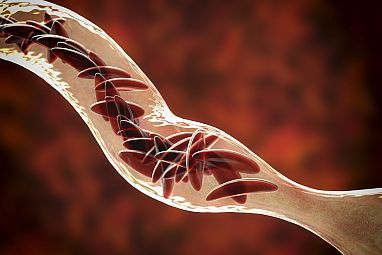Sickle hemoglobin mutations
Sickle hemoglobin
Sickle hemoglobin mutations are often linked to Sub-Saharan Africa but are also common in other regions that have a high burden of malaria, including Central/South America, the Caribbean, the Middle East, the Mediterranean, and India. Most patients with sickle cell trait (eg, one altered beta—hemoglobin chain) are asymptomatic and considered benign carriers; however, certain stressors, such as flying at high attitude or dehydration due to alcohol consumption, can sometimes lead to intravascular hemolysis, tissue ischemia (eg, splenic infarction), and/or vasoocclusive pain. Hemoglobin electrophoresis is diagnostic
Splenic infarction usually occurs in the setting of splenic artery (or subbranch) occlusion due to hypercoagulable states, embolic disease, or hemoglobinopathy (eg, sickle cell disease or trait). Although patients with sickle cell trait are generally asymptomatic, they occasionally develop splenic infarction and intravascular hemolysis in the setting of certain stressors such as air travel or dehydration. Diagnosis of most hemoglobinopathies is made by hemoglobin electrophoresis.
https://www.cdc.gov/ncbddd/sicklecell/facts.html
https://www.nih.gov/news-events/nih-research-matters/fixing-sickle-cell-disease-gene#:~:text=Sickle%20cell%20disease%20(SCD)%20is,sickle%2Dshaped%20red%20blood%20cells.




